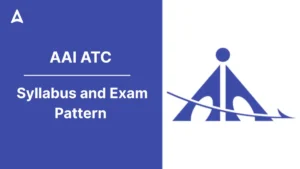Now, we will be starting up with the Notes and Quizzes Subject wise and chapter wise starting up with the Paper 1 Subject – Principles & Practices of Banking
PART A – INDIAN FINANCIAL SYSTEM
WHAT IS A FINANCIAL SYSTEM ?
The structure that is available in an economy to mobilize the capital from various surplus sectors of the economy and allocate and distribute the same to the various needy sectors. The process of transformation is aided by various types of financial assets suiting the individual needs and demands of both the ‘investors’and ‘spenders’.
Roles and Functions in brief of the Central Banking Authority
The Central Banking Authority (Reserve Bank of India) has two distinct roles; Monetary control including controlling inflation and bank supervision. Monetary control is exercised through Cash Reserve Ratio and Statutory Liquidity Ratio mechanism and Bank and Repo rates – main instruments. Now, RBI has setup a department called “department of supervision” to control the commercial banks.
Primary Dealers (PDs)
Primary dealers also known as PDs, deal in government securities and deal in both the primary and secondary market. Their basic responsibility is to provide markets for government securities and strengthen the government securities market. Thus PDs are acting as a market maker of government securities.
Financial Institutions (FIs)
FIs are development financial institutions which provide long-term funds for industry and agriculture. All these institutions are under off-site and on-site surveillance of the Central Banking Authority. FIs raise their resource through long-term bonds from the financial system and borrowings from international financial institutions.
Co-operative Banks
Initially set up to supplant indigenous sources of rural credit, particularly money lenders, today they mostly serve the needs of agriculture and allied activities, rural-based industries and to a lesser extent, trade and industry in urban centers. These are allowed to raise deposits and give advances from and to the public. Urban Co-operative Banks are controlled by State governments and RBI, while other co-operative banks are controlled by National Bank for Agriculture and Rural Development (NABARD) and State Governments. Except for certain exemptions in paying a higher interest on deposits, the Urban Co-operative Banks regulatory framework is similar to the other banks.
Payment and Settlement System
An efficient and effective Payment and Settlement System is a necessary condition for smooth functioning of Financial System. Maintenance of clearing houses at various centres, creation of currency holding chests in different geographical areas and creation of the mechanism for electronic transfer of funds are other activities undertaken by the Central Banks.
Management of Government Debt
Most of the Central Banks manages the issue and service of government debt. The involves price discovery, volumes to be raised, tenure of debt and matching it with the overall cash management of the debt.
Bankers to Government
Most of Central Banks maintain accounts and deposits of Governments and carry out their cash management through the issue of Bonds and Treasury Bills.
Lender of Last Resort to Banks
The Central Bank provides liquidity support on a temporary basis through the facility of repurchase (REPO) of securities to banks to meet their short-term liquidity requirements.
Cash Reserve Ratio (CRR)
As per Section 42(I) of RBI Act 1934, Cash Reserve Ratio (CRR) is the amount of funds that all Scheduled Commercial Banks (SCBs) are required to maintain with RBI. Cash Reserve Ratio (CRR) is the mandatory deposit to be held by Banks with the Central Bank. It is a percentage of their Net Demand and Time Liabilities. CRR enables Central Bank to control liquidity in the system, and thereby, controlling inflation and Bank lending. The increase or decrease can be affected by the Central Bank to pump in or soak liquidity in the banking system.
Statutory Liquidity Ratio (SLR)
Statutory Liquidity Ratio (SLR) is the prescribed percentage of Net Demand and Time Liabilities of a bank to be held in prescribed securities, mostly government securities. Apart from CRR, every bank is required to maintain in India at the close of business every day, a minimum proportion of their Net Demand and Time Liabilities as liquid assets in the form of cash, gold and un-encumbered approved government securities. The ratio of liquid assets to demand and time liabilities is known as Statutory Liquidity Ratio (SLR). The increase or decrease in the CRR & SLR, contracts or expands credit creation.
Principles & Practices of Banking, (Paper 1)
To see the Syllabus and Chapters of this subject, kindly follow the below link –
JAIIB AND DB&F Paper 1 Syllabus: Principles & Practices of Banking
We will post Quizzes based on the Notes after finishing the PART A means Chapter 1 which we will include Objective type questions based on the exam pattern.
IIBF has Released the Schedule/Exam dates for JAIIB and DB&F exams and the registration to apply for the same has been started.
- All About DB&F: Diploma in Banking and Finance
- All About JAIIB: Exam Pattern, Eligibility and Schedule
- Diploma in Banking & Finance: Exam Pattern, Eligibility and Schedule
- Introducing JAIIB: A Start-Up Course for Every Banker or Banking Aspirant to Bank Upon
- JAIIB AND DB&F Paper 1 Syllabus: Principles & Practices of Banking
- JAIIB AND DB&F Paper 2 Syllabus: Accounting & Finance for Bankers
- JAIIB AND DB&F Paper 3 Syllabus: Legal & Regulatory Aspects of Banking
- IIBF: JAIIB AND DB&F 2018 Exam Dates/Schedule Released
- IIBF: JAIIB AND DB&F 2018 Exam Registration Started
- JAIIB AND DB&F 2018 Exam: Study Plan






 GA Capsule for SBI Clerk Mains 2025, Dow...
GA Capsule for SBI Clerk Mains 2025, Dow...
 The Hindu Review October 2022: Download ...
The Hindu Review October 2022: Download ...
 AAI ATC Syllabus 2025 and Exam Pattern
AAI ATC Syllabus 2025 and Exam Pattern





